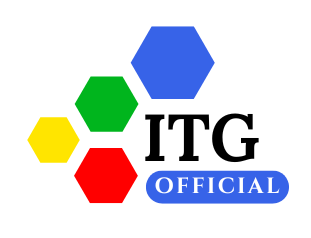The future of e-commerce in India is entering a revolutionary phase. With digital adoption accelerating across urban and rural regions, India is poised to become one of the world’s largest e-commerce markets. For entrepreneurs, startups, and marketers, understanding where e-commerce is heading can unlock massive growth opportunities.
In this comprehensive guide, we’ll explore the trends, technologies, and market behaviors that are shaping the future of e-commerce in India.
The Current State of E-commerce in India
Before we look forward, let’s quickly review the current landscape. India’s e-commerce sector surpassed $70 billion in 2023 and is on track to exceed $200 billion by 2027, driven by rapid digital adoption and consumer demand. The rise in smartphone penetration, digital payments, and government initiatives like Digital India have fueled this explosive growth.
Popular platforms such as Amazon, Flipkart, Meesho, and niche D2C brands have transformed online shopping into a mainstream activity.
1. Growing E-commerce Adoption in Smaller Indian Cities
One of the major factors driving the future of e-commerce in India is the growing online participation from smaller towns and semi-urban areas. As internet access and digital literacy improve, e-commerce platforms are expanding their logistics and marketing to tap into these high-potential markets.
Why it matters: Businesses that localize content, optimize for regional languages, and simplify mobile shopping experiences will dominate these emerging markets.
2. Mobile-First Commerce Will Lead
India’s mobile commerce is booming, fueled by over 750 million smartphone users across the country.. Consumers are more likely to browse, compare, and purchase products directly from their phones.
To remain competitive in India’s evolving e-commerce landscape, businesses need to focus on:
Mobile-friendly websites
Fast-loading product pages
Simplified checkout processes
App-based loyalty programs
Designing for mobile users is now a necessity rather than a choice.
3.Integration of AI and Automation
Artificial Intelligence is reshaping every aspect of online shopping — from personalized product recommendations to predictive inventory and automated customer support.
E-commerce brands are increasingly using tools that analyze customer behavior, automate marketing campaigns, and provide real-time chat assistance.
Example: A visitor who viewed a product but didn’t purchase can receive an automated email with a discount offer. This is AI-powered personalization in action.
4.Voice Commerce and Regional Language Shopping
In 2025 and beyond, more Indian users will shop using voice commands. Platforms like Amazon Alexa and Google Assistant are already influencing buying decisions through voice search.
To prepare for the future of e-commerce in India, businesses must:
Optimize product listings for voice search.
Use conversational keywords
Enable multilingual browsing and shopping.
This will especially benefit users who are more comfortable with Hindi, Tamil, Bengali, and other regional languages.
5. The Rise of D2C (Direct-to-Consumer) Brands
D2C brands in India are bypassing traditional marketplaces and building their e-commerce websites. This allows them to control customer data, build loyal communities, and offer better pricing.
From beauty and fashion to wellness and food, Indian D2C brands are thriving by offering unique, high-quality products and fast delivery.
In the future of ecommerce in India, expect even more small brands to go online with strong content, influencer partnerships, and niche targeting.
6. Sustainable and Ethical E-commerce
Today’s consumers are becoming more environmentally conscious. E-commerce businesses focusing on eco-friendly packaging, local sourcing, and ethical production will attract this growing segment.
Highlighting sustainability practices on your product pages and social media can positively influence purchase decisions.
7. Fast and Hyperlocal Deliveries
Delivery speed is a major differentiator in online shopping. Same-day or even one-hour deliveries are becoming common in metro cities. Hyperlocal delivery services are also expanding to smaller towns.
This trend will shape the future of e-commerce in India, especially for groceries, medicines, and essential items.
8. Social Commerce Is Exploding
Social media platforms like Instagram, Facebook, and WhatsApp are turning into full-fledged e-commerce platforms. Influencer-led marketing and live video selling are making it easier for users to discover and buy products without leaving the app.
For small businesses, this is a powerful way to build trust, connect with customers, and increase conversions.
Final Thoughts on the Future of E-commerce in India
The future of e-commerce in India is promising, competitive, and filled with innovation. From small-town buyers and voice search to AI-driven experiences and D2C brands, the landscape is changing fast.
To succeed, businesses must be adaptive, mobile-first, and customer-centric. E-commerce is no longer just about selling online — it’s about delivering experiences, building relationships, and staying one step ahead of the curve.
For more insights on digital trends, marketing strategies, and eCommerce growth, visit ITG Official — your trusted source for the latest in digital marketing.



